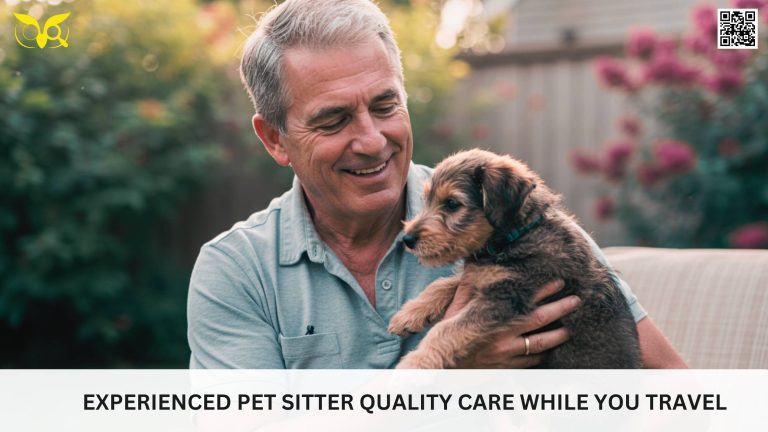Living in the countryside offers freedom, space, and serenity—but if you have pets, it also comes with a few unique challenges. When the closest emergency vet is hours away and cell reception drops out halfway down the driveway, rural pet owners can’t afford to be caught off guard. Whether you’re managing a working farm or just enjoying the quiet life with a couple of dogs and a barn cat, being your own first responder is part of the deal.
That doesn’t mean giving up professional care. It means staying equipped for what happens before you can get there. Let’s discover five key areas for rural pet owners to stay ready and stay calm in a pet emergency.

Smart Fencing Helps Prevent Emergency Calls
The best emergency is the one that never happens. When you live in a wide-open area without traditional barriers, it’s easy for curious pets to wander into dangerous territory. One of the smartest preventive tools rural pet owners use is an invisible dog fence—a setup that keeps pets contained without the need for physical fencing.
This system can be a game-changer in areas where building a full perimeter fence is either too expensive or too impractical. It helps prevent accidents like road injuries, run-ins with wildlife, or disappearing dogs who chase a squirrel too far from home.
Preventive care isn’t always about vaccines and vet visits. It starts with the choices you make in how your animals move around your property. When your nearest neighbor is a mile away and your property line runs longer than a city block, a containment system that respects your landscape while protecting your pets is more than just a convenience—it’s a safety strategy.
What Should to Have on Hand for Wounds and Injuries
No matter how careful you are, accidents still happen. Your dog scrapes herself on barbed wire. Your cat limps home after tangling with something in the woods. When the local vet is closed or too far to reach in time, knowing “how to cover a wound on a dog” can be the difference between an infection and a quick recovery.
This isn’t about improvising with duct tape. Want to know how to cover a wound on a dog? It starts with gentle rinsing, applying a pet-safe antiseptic, and then covering the wound with a clean dressing that won’t stick or cause irritation. You’ll need to keep your pet calm in the process as well.
A rural first-aid kit should include gauze pads, self-adhesive wrap, blunt scissors, tweezers, antiseptic spray, and an emergency cone or protective boot. These aren’t just for dogs—most of the tools work for cats, livestock, and even you, if needed. In a pinch, you need your supplies organized and accessible. It’s not about panic—it’s about preparation.
Spot an Emergency Before It Escalates
Living in a rural setting means you’re often your pet’s only line of defense. Subtle changes—like appetite loss, stiffness, or unusual behavior—might be early signs of a brewing issue. Without frequent trips to the vet or regular grooming appointments, these things can go unnoticed until they turn into major problems.
The trick is observation. Make it a habit to scan your animals daily. Look for limping, swollen spots, discharge, or anything off-pattern. Catching symptoms early gives you time to respond before things spiral. And don’t underestimate the power of your senses. Bad smells, labored breathing, or sudden lethargy are red flags. This kind of vigilance becomes second nature over time, especially in environments where help doesn’t come fast.
Handle Heatstroke, Hypothermia, or Snakebites
Living closer to nature also means dealing with its extremes. Heatwaves, snowstorms, and encounters with wildlife aren’t rare events—they’re just Tuesday. Dogs left outside in summer without enough shade or water can overheat fast. Cats that hide in the barn through a winter storm might return frostbitten. And snakes? They don’t need an invitation to show up.
Knowing how to cool an overheated dog with damp towels and shade, or how to gently warm a hypothermic animal with blankets and body heat, can buy precious time. For snakebites, immobilizing the pet and keeping them calm while you seek emergency care is key—don’t try to suck out venom or apply a tourniquet.
When the Internet Goes Down and the Vet Can’t Pick Up
Remote areas often come with unreliable cell service and patchy Wi-Fi. That’s a problem when your go-to plan is to call or Google. Rural pet owners need a backup plan for communication and information. Printed emergency protocols, books on animal care, and even downloaded videos can be lifesavers when you can’t get through to anyone.
Another smart move? Building relationships with neighbors who also have animals. Chances are, someone nearby has dealt with the same emergencies and can lend insight, supplies, or a ride. You’re not looking for medical advice—you’re looking for community resilience. Rural living works best when people help each other.
Explore Baddieshub for more.





